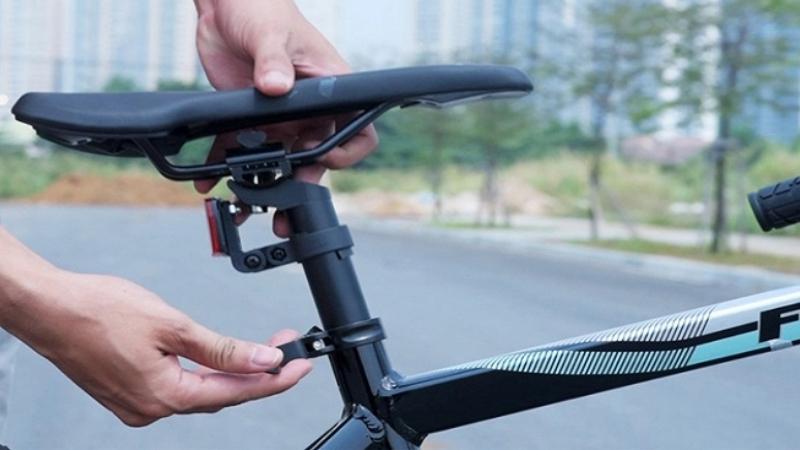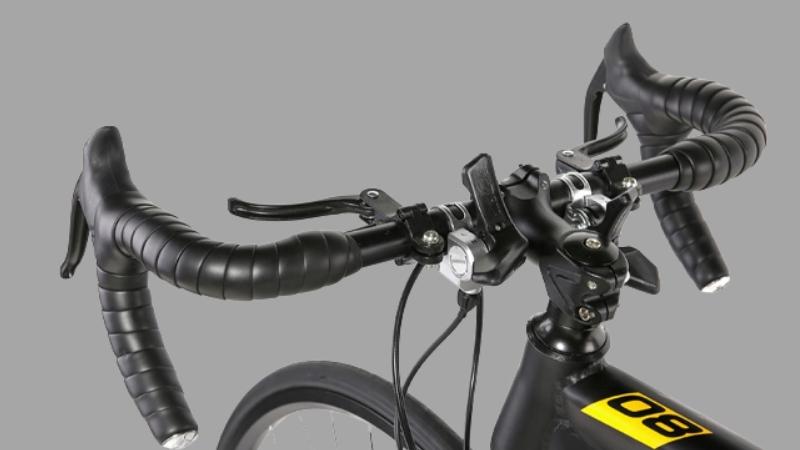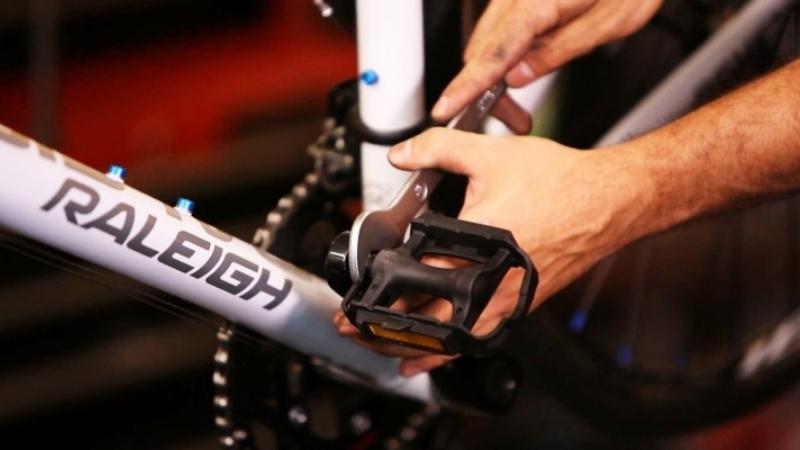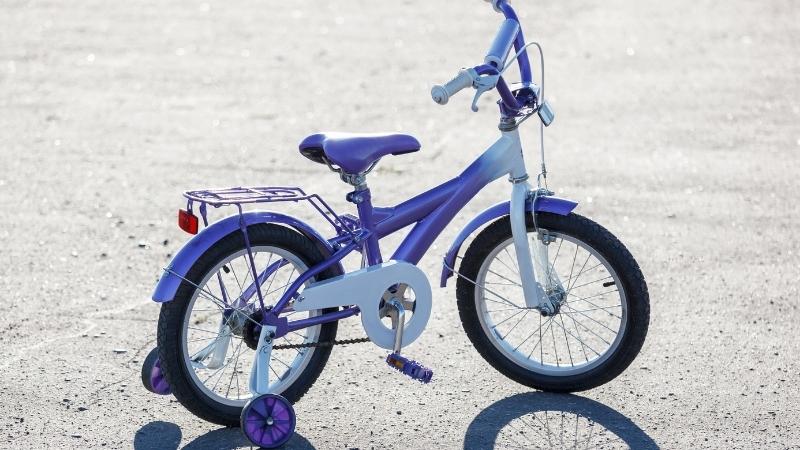Choosing the right bike size for your height will make your riding experience more comfortable. Let’s explore how to choose the right bike size for your height in the article below.
1 Understanding Bike Sizing
Bike sizing is based on two key measurements: inseam length and frame size (also known as seat tube length). It’s important to note that bike sizing is determined by height rather than weight.
To measure your inseam, stand against a wall, ensuring you are on a flat surface. Then, place a book between your legs, close to the crotch, and mark the highest point of the book on the wall. The distance from this mark to the floor is your inseam.
 Understanding Bike Sizing
Understanding Bike Sizing
Frame size, on the other hand, is measured as the distance between the center of the bottom bracket (where the pedals attach) and the top of the seat tube.
For children’s bikes, wheel diameter is commonly used instead of inseam and seat tube measurements. This is typically given in inches.
2 Why Bike Sizing Matters
Interestingly, many people don’t pay attention to bike sizing when purchasing. They often base their choice on the bike’s appearance and how it feels when they sit on it. However, just like with clothing or shoes, selecting the right bike size is crucial for a comfortable and safe riding experience.
Whether you’re a professional cyclist or a casual rider, choosing the right bike size for your height will make a significant difference in your comfort and confidence while riding. Additionally, it ensures safety and reduces the risk of accidents.
 Why Bike Sizing Matters
Why Bike Sizing Matters
3 Basic Bike Sizing Guide
Start by accurately measuring your height. Then, measure your inseam by determining the distance from the bottom of your pants to your feet.
 Measure Your Height and Inseam
Measure Your Height and Inseam
Choosing a frame that fits your body proportions is vital. A frame that’s too large will make pedaling difficult, while a small one will restrict your leg movement and reduce pedaling power.
 Determine the Right Frame Size
Determine the Right Frame Size
To ensure comfort while riding, adjust the saddle height according to your leg length.
 Adjust the Saddle Height
Adjust the Saddle Height
The handlebar position is crucial, as improper positioning can lead to injuries in your back, wrists, and knees. If you prefer a more upright riding posture, raise the handlebars. Conversely, if you want to lean forward while riding, lower the handlebars.
 Consider the Handlebar Position
Consider the Handlebar Position
Wheel size is measured as the diameter from the axle to the tire. This measurement is usually indicated on the tire, so you don’t need to measure it yourself.
 Measure Wheel Size
Measure Wheel Size
Selecting the right pedals will make your rides smoother and more comfortable. Try out different types of pedals to find the ones that suit you best and prevent toe overlap or slippage.
 Choose the Right Pedals
Choose the Right Pedals
4 Tips for Choosing the Right Bike Size by Type
City Bike Sizing
 City Bike Sizing
City Bike Sizing
When choosing a city bike, remember that the frame size should be your inseam measurement multiplied by 0.685. Since city bikes are primarily used for daily commuting on flat urban roads, opt for a lightweight model for easier maneuverability.
| Rider Height (cm) | Inseam x 0.685 (cm) | Frame Size (cm) | Size |
|---|---|---|---|
| 147 – 155 | 61 – 69 | 42 – 47 | XS |
| 155 – 165 | 70 – 77 | 48 – 52 | S |
| 165 – 175 | 78 – 81 | 53 – 55 | M |
| 175 – 183 | 82 – 85 | 56 – 58 | L |
| 183 – 191 | 86 – 88 | 59 – 60 | XL |
| 191 – 198 | 89 – 90 | 61 – 63 | XXL |
City Bike Size Chart
Mountain Bike Sizing
 Mountain Bike Sizing
Mountain Bike Sizing
For mountain bikes, the frame size should be your inseam measurement multiplied by 0.66. When choosing a mountain bike, you may come across the dilemma of selecting between 26-inch and 27.5-inch wheels.
The 27.5-inch wheels offer increased speed and a longer wheelbase, resulting in improved balance when navigating obstacles. Moreover, the larger wheels provide additional ground clearance, making them ideal for rugged terrain.
| Rider Height (cm) | Inseam x 0.66 (cm) | Frame Size (cm) | Size |
|---|---|---|---|
| 147 – 155 | 61 – 69 | 40 – 45 | XS |
| 155 – 165 | 70 – 77 | 46 – 50 | S |
| 165 – 175 | 78 – 81 | 51 – 53 | M |
| 175 – 183 | 82 – 85 | 54 – 56 | L |
| 183 – 191 | 86 – 88 | 57 – 58 | XL |
| 191 – 198 | 89 – 90 | 59 – 60 | XXL |
Mountain Bike Size Chart
Road Bike Sizing
 Road Bike Sizing
Road Bike Sizing
For road bikes, the frame size should be your inseam measurement multiplied by 0.70. Additionally, when measuring your inseam, leave a gap of 1.5-2 cm between the top of your pants and the book. This allows for comfortable standing at traffic lights without having to stretch your legs too far.
| Rider Height (cm) | Inseam x 0.70 (cm) | Frame Size (cm) | Size |
|---|---|---|---|
| 148 – 152 | 61 – 68 | 43 – 47 | XS |
| 152 – 160 | 69 – 75 | 48 – 52 | S |
| 160 – 168 | 76 – 78 | 53 – 55 | M |
| 168 – 175 | 79 – 81 | 55 – 57 | L |
| 175 – 183 | 82 – 85 | 57 – 60 | XL |
| 183 – 198 | 86 – 90 | 60 – 63 | XXL |
Road Bike Size Chart
Kids’ Bike Sizing
 Kids’ Bike Sizing
Kids’ Bike Sizing
| Rider Height (cm) | Age |
|---|

































